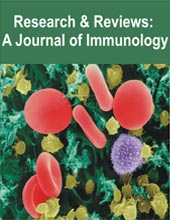
Kamini P. Sao,
- Assistant Professor Department of Child Health Nursing Kasturba Nursing College, Sevagram Maharashtra India
Abstract
Wiskott-Aldrich Syndrome (WAS) is an uncommon genetic disorder inherited through the X chromosome, marked by a combination of immune system deficiencies, eczema, and low platelet counts. This syndrome primarily affects males, leading to significant morbidity and mortality due to recurrent infections, bleeding complications, and autoimmune diseases. Mutations in the WAS gene disrupt the production of the Wiskott-Aldrich Syndrome protein (WASp), crucial for the functioning of immune cells and platelet formation. Diagnostic approaches include clinical evaluation, laboratory tests, and genetic analysis, with flow cytometry and molecular genetic testing playing pivotal roles. Current treatment strategies encompass hematopoietic stem cell transplantation (HSCT), gene therapy, and supportive care, aiming to improve immune function and manage symptoms. Recent developments in gene therapy show encouraging potential for achieving sustained remission over an extended period. Additionally, the role of supportive therapies, such as prophylactic antibiotics, immunoglobulin replacement, and careful management of eczema and bleeding, are critical in improving patient outcomes. Emerging research into targeted therapies and the development of better HSCT protocols continue to enhance the prognosis for WAS patients. This review provides a comprehensive overview of the clinical manifestations, diagnostic methodologies, and emerging treatment options for Wiskott-Aldrich Syndrome, emphasizing the importance of early diagnosis and intervention, and the potential for future therapeutic breakthroughs.
Keywords: Wiskott-Aldrich Syndrome, immunodeficiency, thrombocytopenia, WAS gene, hematopoietic stem cell transplantation, gene therapy, immunodeficiency disorders, pediatric immunology, genetic mutations
[This article belongs to Research & Reviews : A Journal of Immunology(rrjoi)]
References
- Boston Children’s Hospital. Wiskott-Aldrich Syndrome. Retrieved May 20, 2024, from https://www.childrenshospital.org/conditions/wiskott-aldrich-syndrome.
- Kanegane, H., & Tsukada, S. (2019). Wiskott-Aldrich Syndrome. In GeneReviews®. University of Washington, Seattle. Retrieved from https://www.ncbi.nlm.nih.gov/books/NBK539838.
- Wiskott-Aldrich syndrome. Retrieved from
- Stray-Pedersen A, Abrahamsen TG, Frøland SS. Primary immunodeficiency diseases in Norway. Journal of clinical immunology. 2000 Nov; 20:477-85.
- Blundell MP, Worth A, Bouma G, Thrasher AJ. The Wiskott‐Aldrich syndrome: the actin cytoskeleton and immune cell function. Disease markers. 2010;29(3-4):157-75. [PMC free article] [PubMed]
- Malinova D, Fritzsche M, Nowosad CR, Armer H, Munro PM, Blundell MP, Charras G, Tolar P, Bouma G, Thrasher AJ. WASp-dependent actin cytoskeleton stability at the dendritic cell immunological synapse is required for extensive, functional T cell contacts. Journal of Leucocyte Biology. 2016 May;99(5):699-710. [PMC free article] [PubMed]
- Dupré L, Aiuti A, Trifari S, Martino S, Saracco P, Bordignon C, Roncarolo MG. Wiskott-Aldrich syndrome protein regulates lipid raft dynamics during immunological synapse formation. Immunity. 2002 Aug 1;17(2):157-66. [PubMed]
- Meyer-Bahlburg A, Becker-Herman S, Humblet-Baron S, Khim S, Weber M, Bouma G, Thrasher AJ, Batista FD, Rawlings DJ. Wiskott-Aldrich syndrome protein deficiency in B cells results in impaired peripheral homeostasis. Blood, The Journal of the American Society of Hematology. 2008 Nov 15;112(10):4158-69.
- Gismondi A, Cifaldi L, Mazza C, Giliani S, Parolini S, Morrone S, Jacobelli J, Bandiera E, Notarangelo L, Santoni A. Impaired natural and CD16-mediated NK cell cytotoxicity in patients with WAS and XLT: ability of IL-2 to correct NK cell functional defect. Blood. 2004 Jul 15;104(2):436-43.
- Maillard MH, Cotta-de-Almeida V, Takeshima F, Nguyen DD, Michetti P, Nagler C, Bhan AK, Snapper SB. The Wiskott-Aldrich syndrome protein is required for the function of CD4+ CD25+ Foxp3+ regulatory T cells. The Journal of experimental medicine. 2007 Feb 19;204(2):381-91.
- Burns S, Thrasher AJ, Blundell MP, Machesky L, Jones GE. Configuration of human dendritic cell cytoskeleton by Rho GTPases, the WAS protein, and differentiation. Blood, The Journal of the American Society of Hematology. 2001 Aug 15;98(4):1142-9.
- Zicha, Brickell, Kinnon, Thrasher. Chemotaxis of macrophages is abolished in the Wiskott‐Aldrich syndrome. British journal of haematology. 1998 Jun;101(4):659-65.
- Mahlaoui N, Pellier I, Mignot C, Jais JP, Bilhou-Nabéra C, Moshous D, Neven B, Picard C, de Saint-Basile G, Cavazzana-Calvo M, Blanche S. Characteristics and outcome of early-onset, severe forms of Wiskott-Aldrich syndrome. Blood, The Journal of the American Society of Hematology. 2013 Feb 28;121(9):1510-6.
- Sullivan KE, Mullen CA, Blaese RM, Winkelstein JA. A multiinstitutional survey of the Wiskott-Aldrich syndrome. The Journal of pediatrics. 1994 Dec 1;125(6):876-85.
- Devriendt K, Kim AS, Mathijs G, Frints SG, Schwartz M, Van den Oord JJ, Verhoef GE, Boogaerts MA, Fryns JP, You D, Rosen MK. Constitutively activating mutation in WASP causes X-linked severe congenital neutropenia. Nature genetics. 2001 Mar;27(3):313-7.
- Notarangelo LD, Mazza C, Giliani S, D’Aria C, Gandellini F, Ravelli C, Locatelli MG, Nelson DL, Ochs HD, Notarangelo LD. Missense mutations of the WASP gene cause intermittent X-linked thrombocytopenia. Blood, The Journal of the American Society of Hematology. 2002 Mar 15;99(6):2268-9.
- Albert MH, Bittner TC, Nonoyama S, Notarangelo LD, Burns S, Imai K, Espanol T, Fasth A, Pellier I, Strauss G, Morio T. X-linked thrombocytopenia (XLT) due to WAS mutations: clinical characteristics, long-term outcome, and treatment options. Blood, The Journal of the American Society of Hematology. 2010 Apr 22;115(16):3231-8.
- Chiang SC, Vergamini SM, Husami A, Neumeier L, Quinn K, Ellerhorst T, Sheppard L, Gifford C, Buchbinder D, Joshi A, Ifversen M. Screening for Wiskott-Aldrich syndrome by flow cytometry. Journal of Allergy and Clinical Immunology. 2018 Jul 1;142(1):333-5.
- Snover DC, Frizzera G, Spector BD, Perry III GS, Kersey JH. Wiskott-Aldrich syndrome: histopathologic findings in the lymph nodes and spleens of 15 patients. Human Pathology. 1981 Sep 1;12(9):821-31.
- Blaese RM, Strober W, Levy AL, Waldmann TA. Hypercatabolism of IgG, IgA, IgM, and albumin in the Wiskott-Aldrich syndrome. A unique disorder of serum protein metabolism. J Clin Invest. 1971 Nov;50(11):2331-8.
- Gerrits AJ, Leven EA, Frelinger III AL, Brigstocke SL, Berny-Lang MA, Mitchell WB, Revel-Vilk S, Tamary H, Carmichael SL, Barnard MR, Michelson AD. Effects of eltrombopag on platelet count and platelet activation in Wiskott-Aldrich syndrome/X-linked thrombocytopenia. Blood, The Journal of the American Society of Hematology. 2015 Sep 10;126(11):1367-78.

Research & Reviews : A Journal of Immunology
| Volume | 14 |
| Issue | 02 |
| Received | May 20, 2024 |
| Accepted | June 12, 2024 |
| Published | August 16, 2024 |

